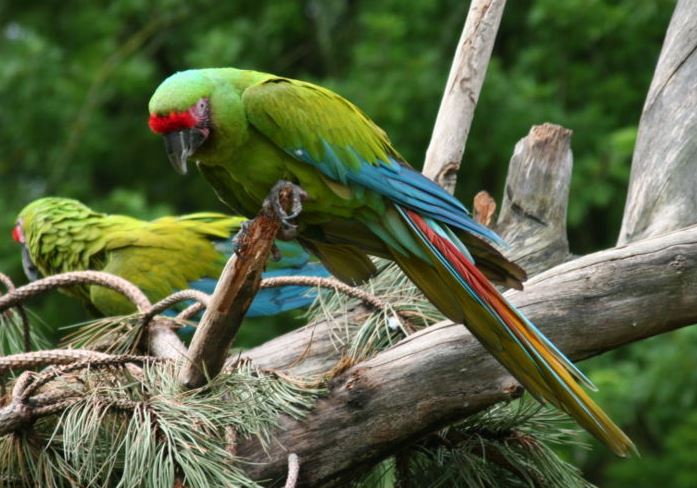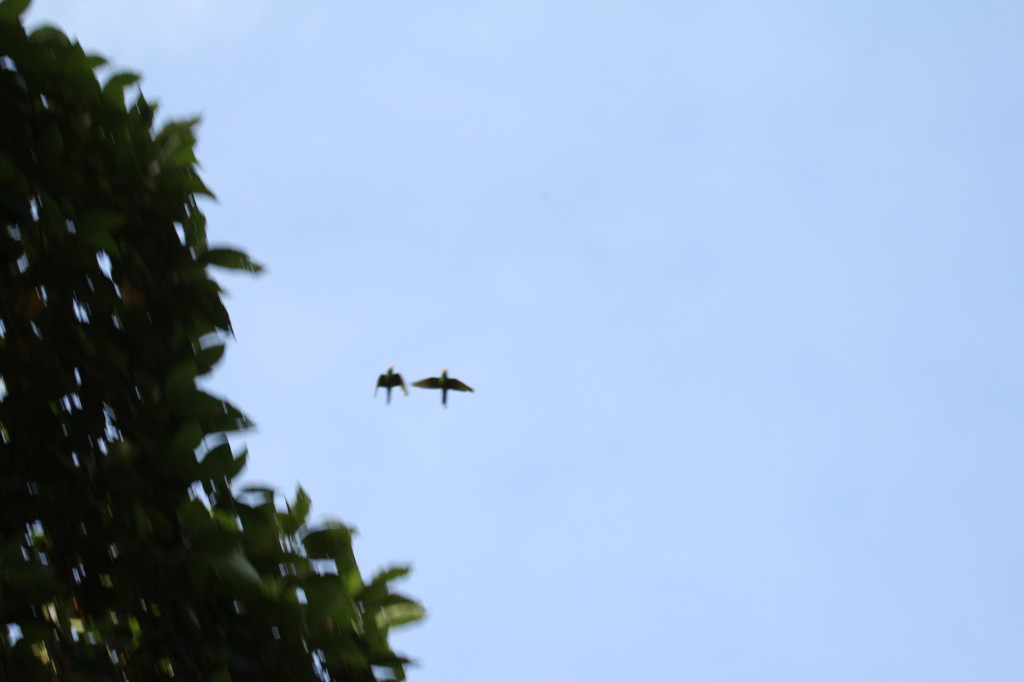 The Great Green Macaw (Ara ambiguus) is also known as Buffon’s Macaw or the Great Military Macaw. Two allopatric subspecies are recognized, the nominate subspecies is found in Central America to northern Colombia, while A. a. guayaquilensis is found in western Ecuador and possibly south-western Colombia.
The Great Green Macaw (Ara ambiguus) is also known as Buffon’s Macaw or the Great Military Macaw. Two allopatric subspecies are recognized, the nominate subspecies is found in Central America to northern Colombia, while A. a. guayaquilensis is found in western Ecuador and possibly south-western Colombia.
The photo above from Wikipedia shows the bird up close in all his glory. I wasn’t so lucky with my photography as both my sightings were at a distance and came out blurry. At least I got to see them which was exciting in itself!
 This macaw has a very limited range in Nicaragua, Honduras, Costa Rica, Panama, Colombia and Ecuador. Costa Rica has the easiest places to see them in the Selva Verde/Sarapiqui area and near the Nicaraguan border at Laguna del Lagarto. Use a Central American award to San Jose, Costa Rica.
This macaw has a very limited range in Nicaragua, Honduras, Costa Rica, Panama, Colombia and Ecuador. Costa Rica has the easiest places to see them in the Selva Verde/Sarapiqui area and near the Nicaraguan border at Laguna del Lagarto. Use a Central American award to San Jose, Costa Rica.
.
Great Green Macaws are the largest parrots in their natural range, averaging 85–90 cm (33–36 in) long and 1.3 kg (2.9 lb) in weight. They are mainly green and have a reddish forehead and pale blue lower back, rump and upper tail feathers. Tail is brownish red tipped with very pale blue. The bare facial skin is patterned with lines of small dark feathers, which are reddish in older and female parrots.
They are highly endangered and there are several conservation groups working to preserve them in the wild. If you would like to help this fantastic macaw survive, please visit these projects’ websites.
WORLD PARROT TRUST
WPT has provided support in the form of funds ($15,000 US) through the Great Green Macaw Fund.
Also see: http://www.parrots.org/index.php/ourwork/greatgreenmacaw/
Links to Other Project(s):
http://www.birdlife.org/news/news/2005/07/great_green_macaw.html
http://www.thearaproject.org/project.php
LEARN MORE ABOUT THIS PARROT
VIDEO
This was filmed near the Selva Verde Lodge. I wish I had a camera crew like this! The host, James Currie of Birding Adventures talks about a conservation project to protect the nesting trees of the macaws.
